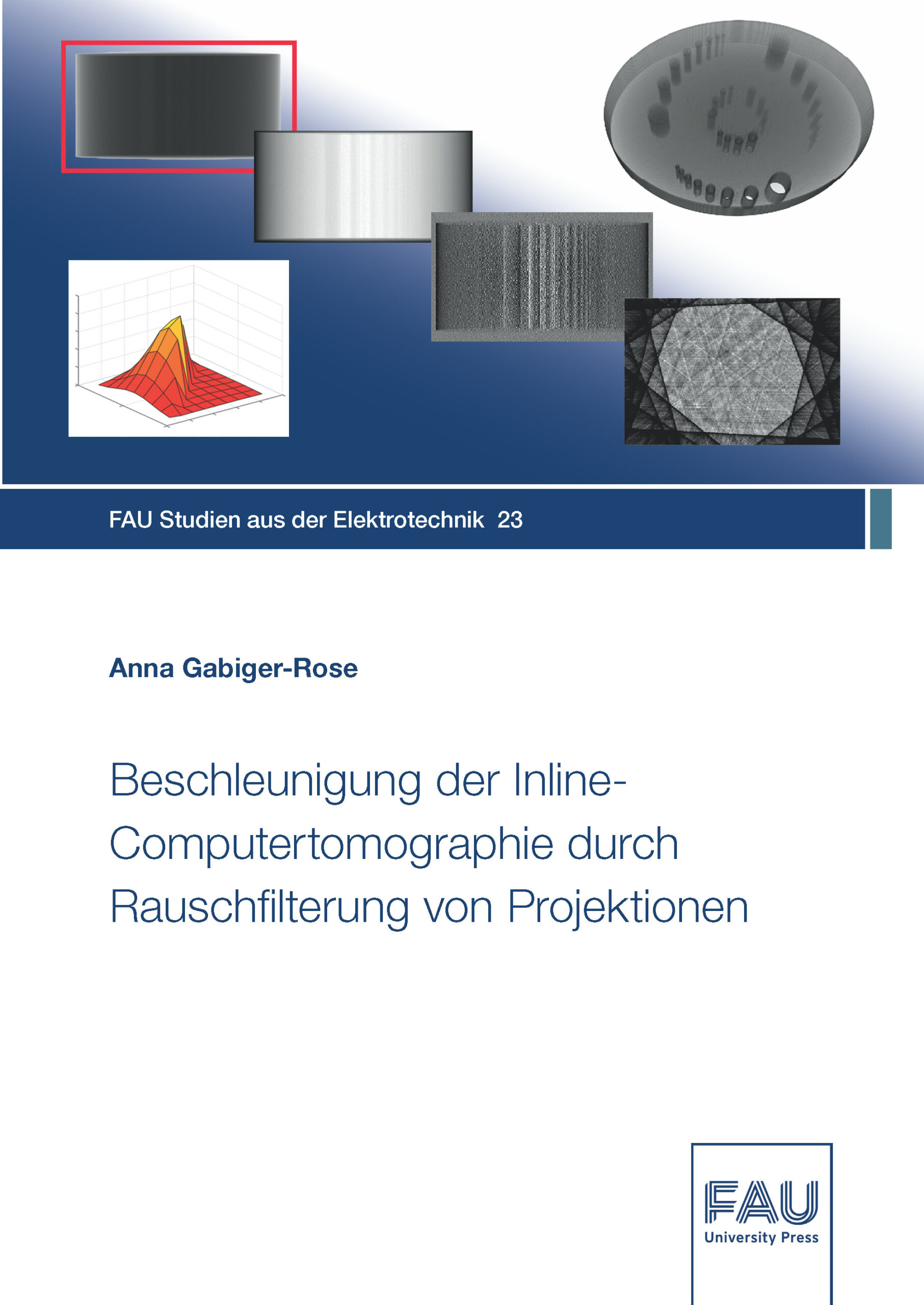Description
Im vorliegenden Buch wird eine Methode entwickelt, die die Inline-CT zum Zweck der zerstörungsfreien Materialprüfung im industriellen Umfeld beschleunigt. Diese Methode basiert auf der Reduktion der Integrationszeit während eines Scans. Bedingt durch die Verkürzung der Integrationszeit verschlechtert sich die Qualität der resultierenden Bilder deutlich, weil das Rauschniveau in den Rohdaten ansteigt. Durch die Filterung der Rohdaten, der sogenannten Projektionen, kann die Bildqualität der rekonstruierten Volumina dennoch an die Qualität des aktuellen Stands der Technik herangeführt werden.
Die Filterung des Rauschens in den verrauschten Projektionen übernimmt das Bilateralfilter. Dieses Filter ist eine Kombination aus zwei Komponenten. Die geometrische Komponente stellt einen Tiefpass dar. Die photometrische Komponente ist die nicht-lineare Komponente und spielt eine wichtige Rolle für die Kantenerhaltung. Wird das photometrische Filter empfindlich gegenüber kleinen Variationen in den Intensitätsunterschieden eingestellt, so können kleine Details im rekonstruierten Volumen erhalten bleiben. Die höchste Empfindlichkeit wird durch die dynamische Parameteranpassung erreicht.
In this book, a method is introduced which allows for the acceleration of the inline-CT for the purpose of non-destructive testing in industrial applications. This method is based on the reduction of the integration time during the scan. In fact, due to the reduction of the integration time the image quality degrades, since the noise level increases. But because of the filtering of the projections the resulting image quality of the volume reconstruction can be aligned to the state-of-the-art quality.
The filtering of the degraded projections is done by the bilateral filter. The bilateral filter combines domain and range filtering. The domain filter acts as a low-pass filter. The range filter stands for the non-linear component and plays an important part in edge preserving. Making the range filter sensitive to the small variations of the intensity differences leads to the preservation of the smallest details in the reconstructed volume. The highest sensitivity is reached by utilizing the dynamic adjustment of the filter parameter.
Taking the technical specification of the detector into account, a real time implementation of the dynamic adjustment of the filter parameter is possible. Considering the achieved results, the performance of the inline-CT can be doubled using the invented method of the reduction of the scanning time followed by the filtering of the induced noise in the projections using the bilateral filter.


Reviews
There are no reviews yet.